Three steps to the Computer - Leibniz Wheel, Arithmometre and Calculating | Drei Schritte in Richtung Computer - Staffelwalze, Arithmometre und Rechenmaschine
| English | Deutsch |
|---|---|
|
One of the historical steps that lead to the development of computers were mass produced calculating machines. They were based on the Leibniz Wheel that was designed by Gottfried Wilhelm Leibniz. You can see a replica in this picture. |
Ein wichtiger Schritt, der zur Erfindung des Computers führte, war die Massenproduktion von Rechenmaschinen. Diese basierten auf der Maschine, welche Gottfried Wilhelm Leibniz erdacht hatte. Von dieser kann hier ein Nachbau gesehen werden. |
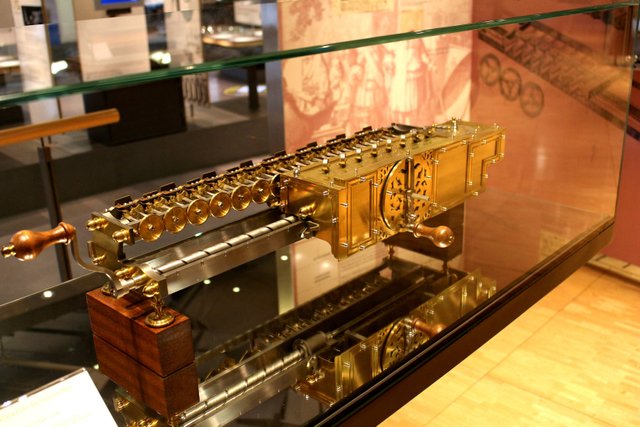
|
The two mass produced machines I want to show you are the French Thomas-Arithmometre and the German Burkhardt-Arithmometre. Charles-Xavier Thomas was born in Colmar in 1785. He was a soldier in the Napoleonic war and fought for Napoleon when he invaded Spain and Portugal. He was involved in calculations for supplies and there he got the idea to design a calculating machine. After he left the army he became involved in insurance. As the director of two insurance companies he made a lot of money and became very prestigious. Along the way he was designing his calculating machine and he registered the patent for his Arithmometre in 1820. The Arithmometre was a stepped drum machine like the Leibniz wheel. Till his death nearly 800 pieces of the Arithmometre were build which made it the first calculating machine that was produced in mass. In 1853 the pope himself gave him the order of the Pontifical Academy of the New Lynxes for his invention. The Arithmometre you can see on this pictures was gifted to Peter V., the new king of Portugal, in 1855. |
Die beiden in Massenproduktion hergestellten Maschinen, die ich heute vorstellen möchte, sind das französische Thomas-Arithmometre und das deutsche Burkhardt-Arithmometre. Charles-Xavier Thomas wurde in Colmar im Elsaß im Jahre 1785 geboren. Während des napoleonischen Zuges nach Spanien und Portugal diente er als Soldat in der französischen Armee. Da er mit Rechenaufgaben für den Nachschub beauftragt war, kam ihm der Gedanke eine Rechenmaschine zu konstruieren. Nach dem Krieg wurde er als Direktor zweier Versicherungen zu einer wohlhabenden und angesehenen Persönlichkeit. Neben seinen Gesellschaften arbeitete er weiter an der Konstruktion der Rechenmaschine und meldete 1820 ein Patent für sein Arithmometre an. Dieses basierte wie die Maschine des Leibniz auf Staffelwalzen. Bis zu seinem Tod lies er 800 dieser Maschinen herstellen, womit sie zur ersten Rechenmaschine wurde, die in Massenproduktion hergestellt worden war. 1853 bekam er von Papst Pius IX. den Orden der Accademia dei Pontificia Nuovi Lincei für seine Erfindung verliehen. Das Arithmometre auf diesem Bild wurde 1855 als Geschenk an König Peter V. von Portugal versandt. |
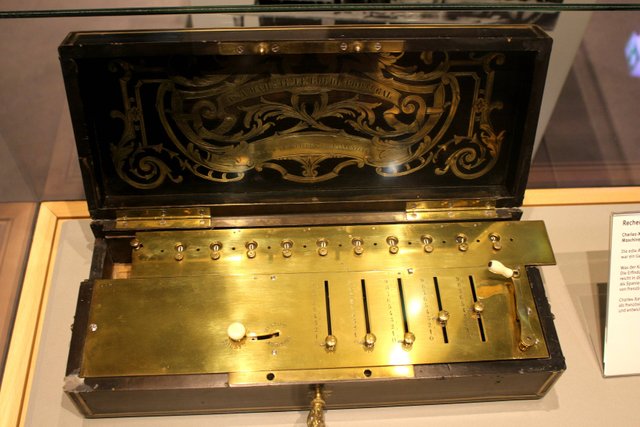
| Charles-Xavier Thomas died in 1870 so the second Arithmometre was produced 30 years after his death. It is just marked with the number 3526 and it looks like no prominent figure was owning it. | Charles-Xavier Thomas starb 1870, dreißig Jahre bevor dieses erweiterte Modell seines Arithmometre hergestellt wurde. Hinter ihm steckt aber keine königliche Geschichte. Es ist lediglich Modell Nr. 3526. |
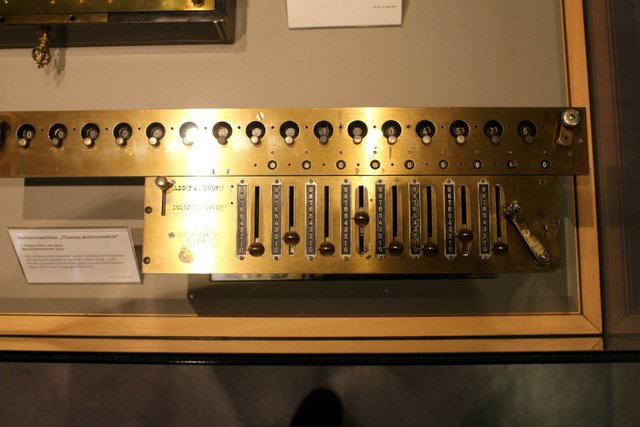
| The next machine is designed after the Thomas-Arithmometre. It is the first German calculating machine that was mass produced and it is named Burkhardt-Arithmometre after its inventor Arthur Burkhardt. He is called one of the pioneers of German IT history. | Die nächste Maschine, welche ich euch zeigen möchte, wurde später hergestellt. Es ist die erste industriell hergestellte deutsche Rechenmaschine und sie heißt Burkhardt-Arithmometre nach ihrem Erfinder Arthur Burkhardt. Er wird als einer der Pioniere der deutschen IT-Geschichte bezeichnet. |
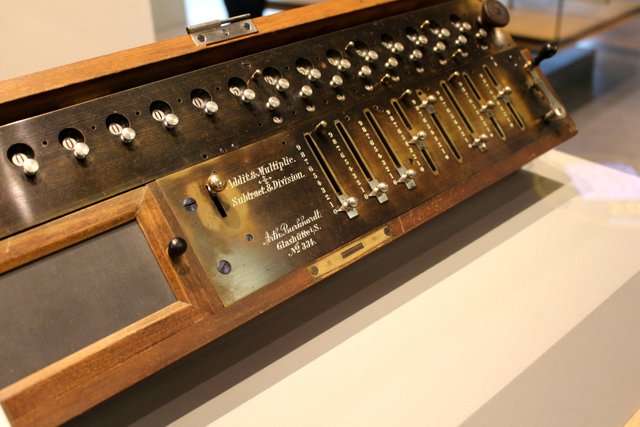
| The pictures were all taken by me when I visited Germany's biggest computer museum and as you can imagine I made a lot more pictures there which I will show you when I find time for some research on the machines that were presented. I only want to add a picture of the calculating machine that was designed by Jacob Leupold in 1727 but never produced. | Die Fotos wurden von mir in Deutschlands größtem Computermuseum aufgenommen und wie sich sicher alle vorstellen können, habe ich noch viel mehr dort aufgenommen. Wenn ich die Zeit finde weitere Fakten zu den anderen Ausstellungsstücken zu finden, werde ich noch weitere Fotos veröffentlichen. Bis dahin füge ich nur noch ein Foto der Rechenmaschine von Jacob Leupold aus dem Jahr 1727, die von ihm jedoch nie gebaut wurde, an. |
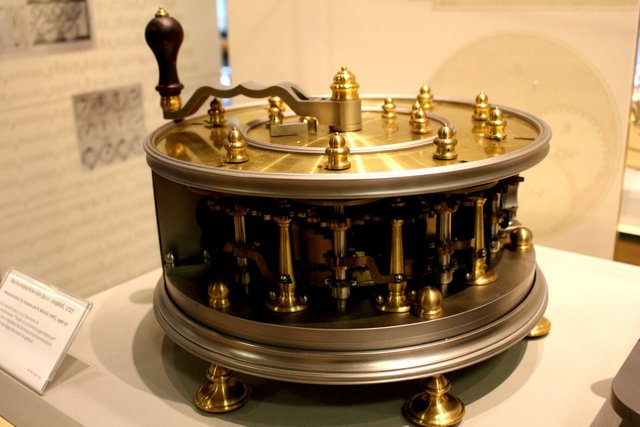
This post has been ranked within the top 50 most undervalued posts in the first half of Mar 10. We estimate that this post is undervalued by $1.87 as compared to a scenario in which every voter had an equal say.
See the full rankings and details in The Daily Tribune: Mar 10 - Part I. You can also read about some of our methodology, data analysis and technical details in our initial post.
If you are the author and would prefer not to receive these comments, simply reply "Stop" to this comment.
Thank you very much for mentioning my post. I appreciate the service that The Daily Tribune provides. :)